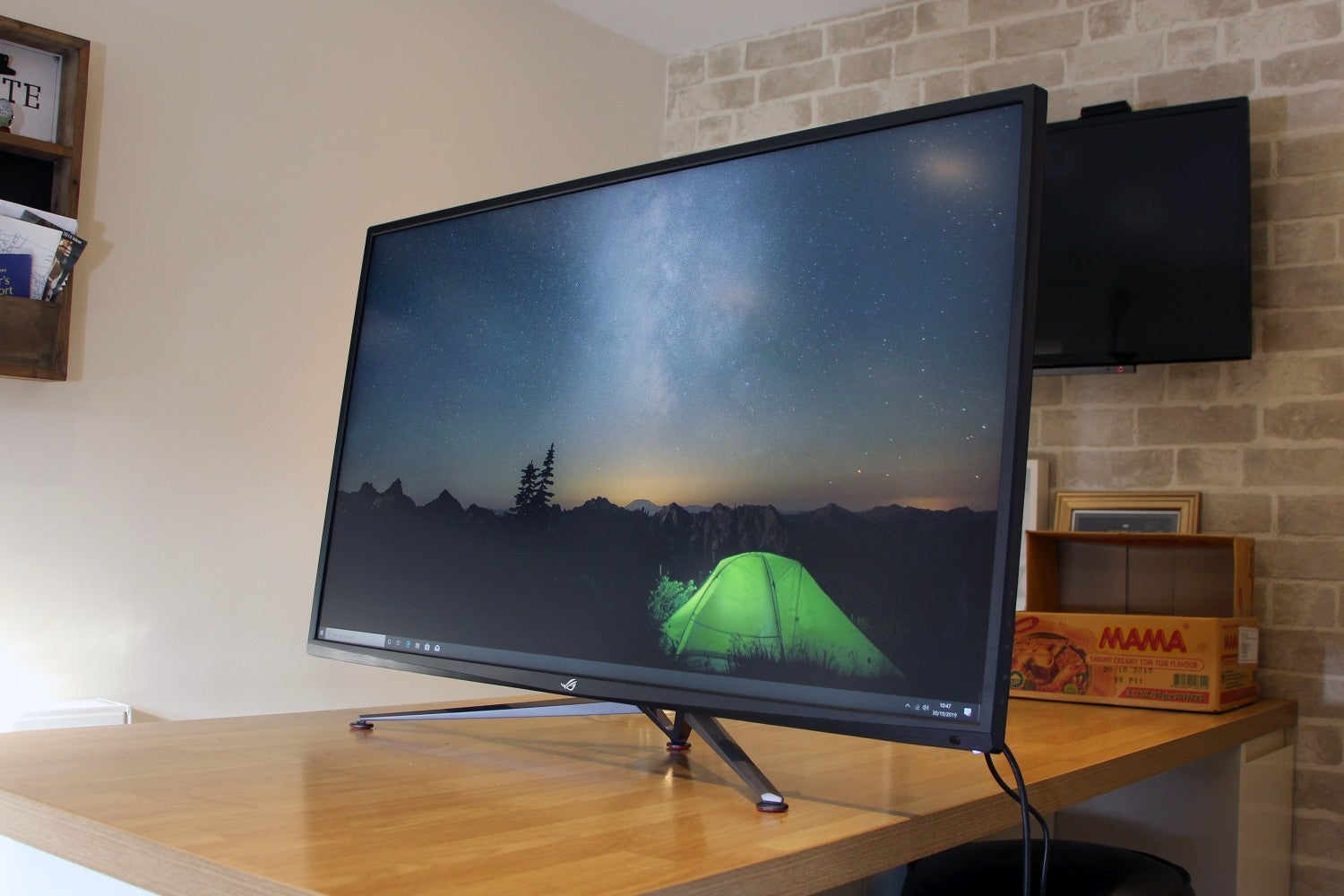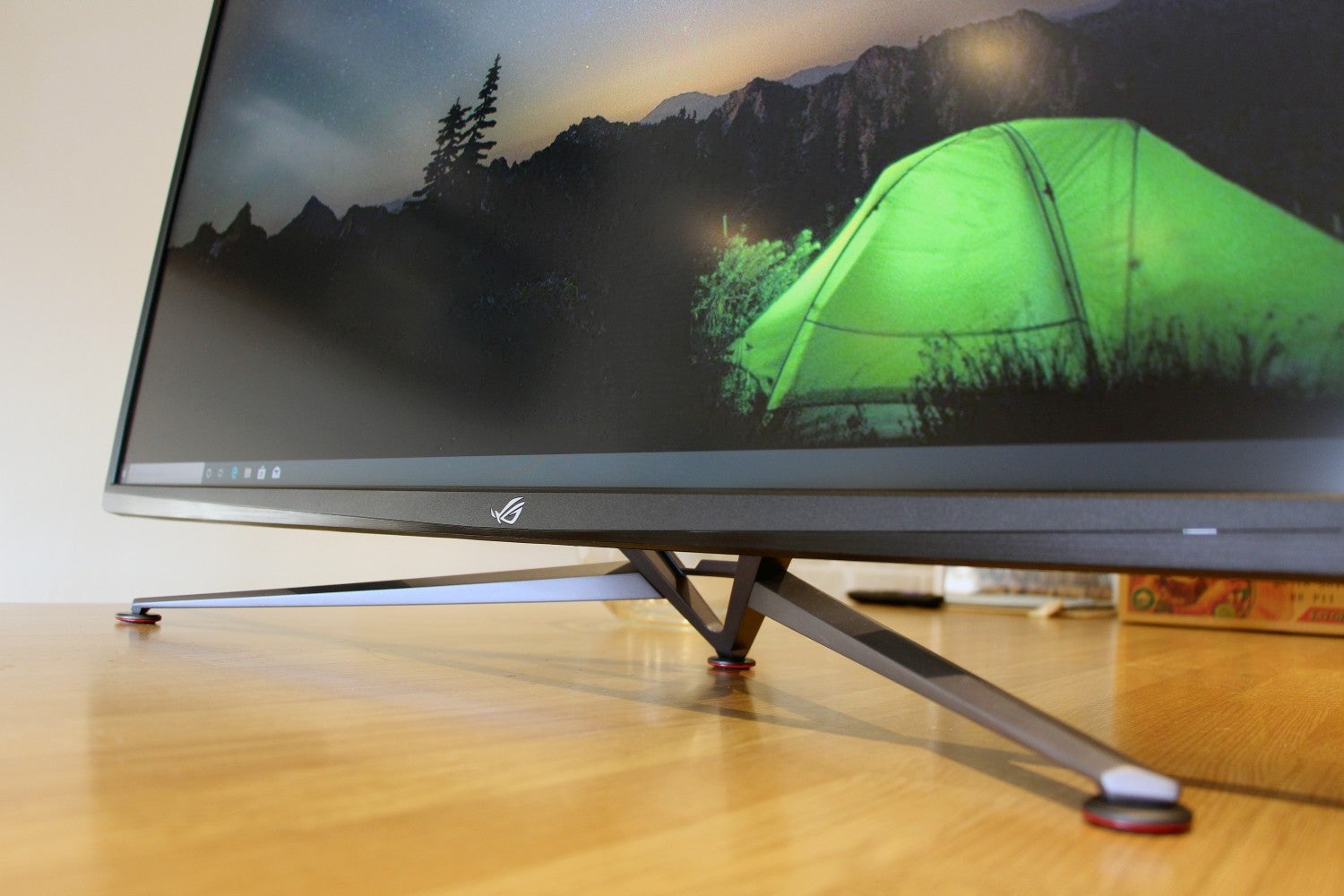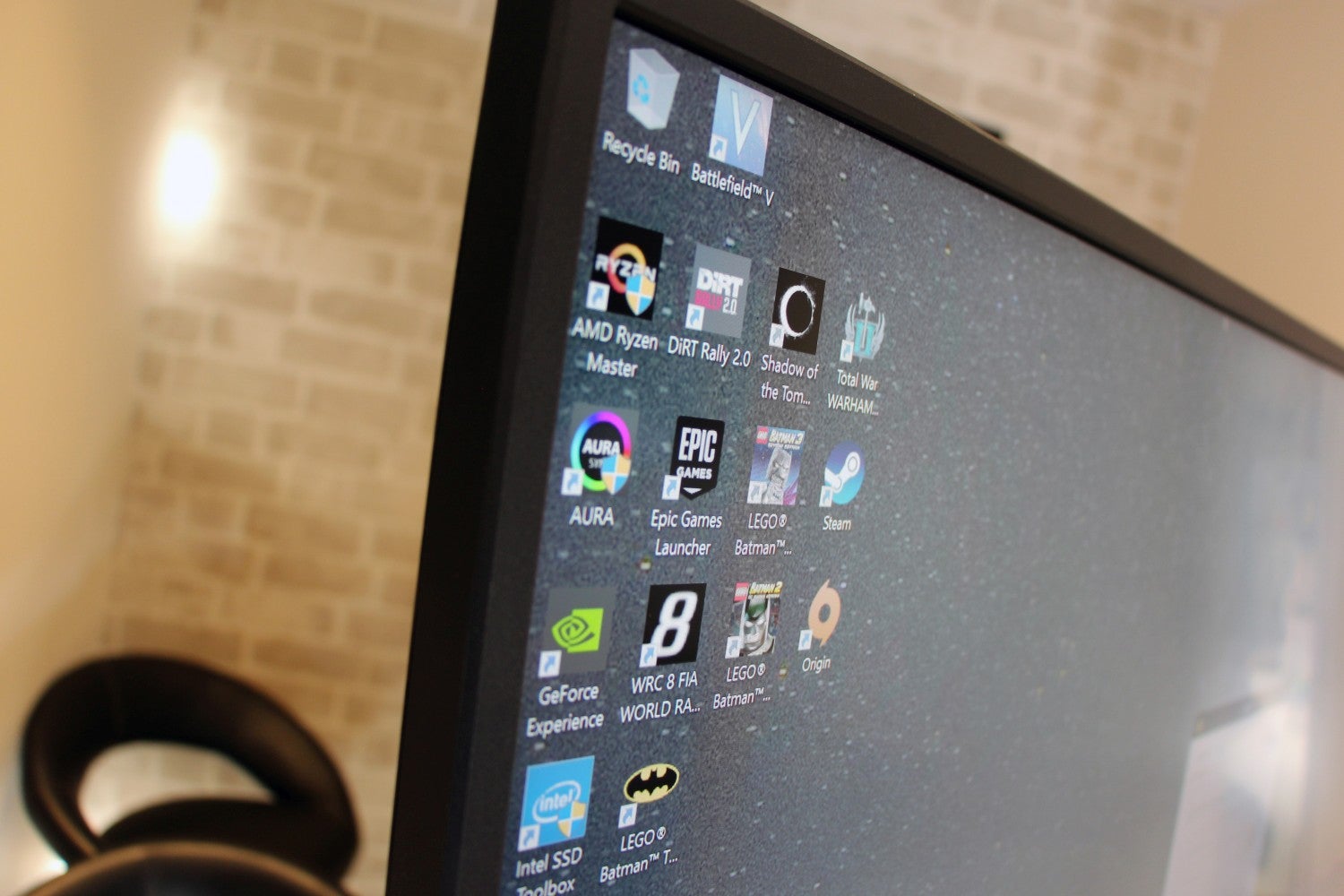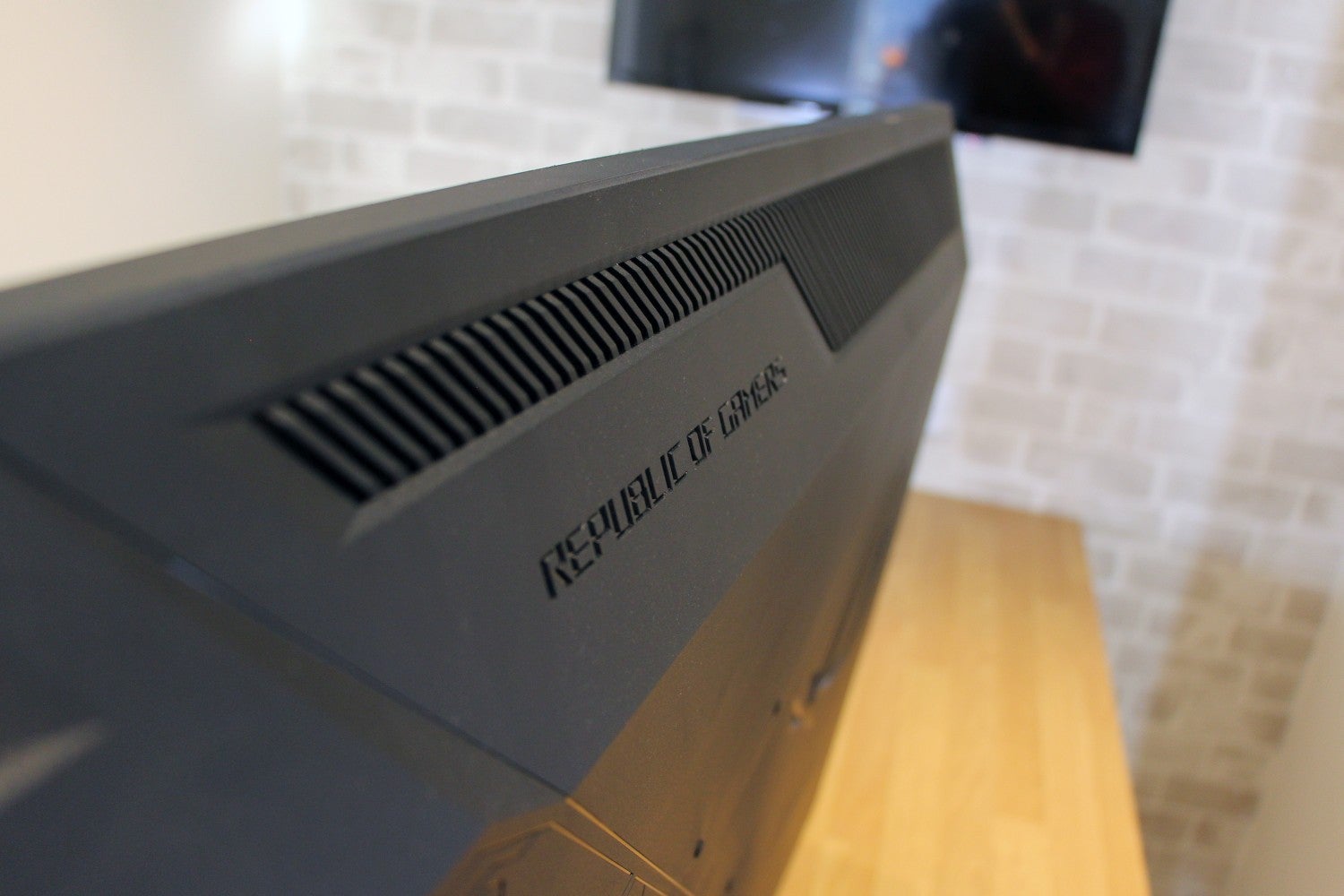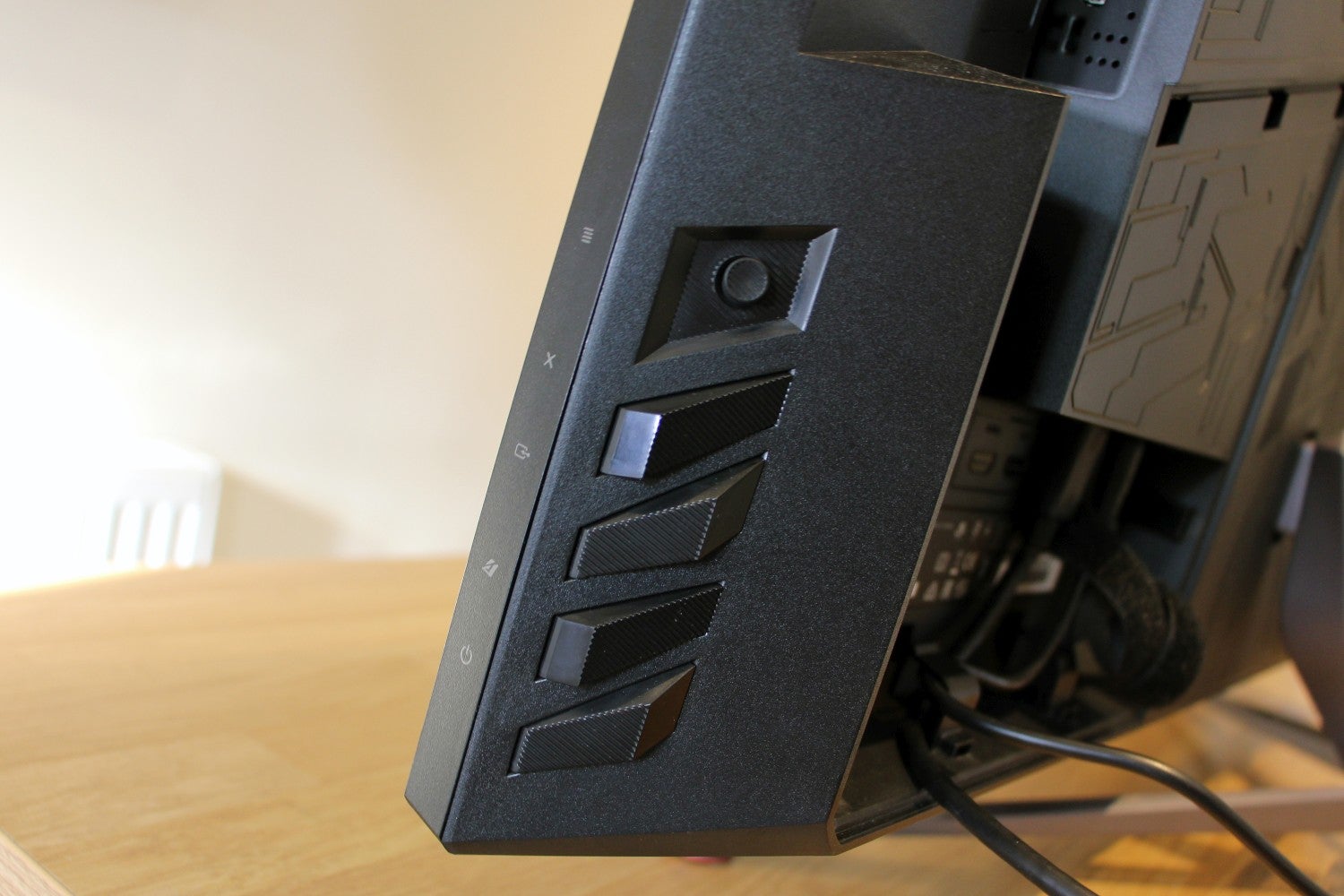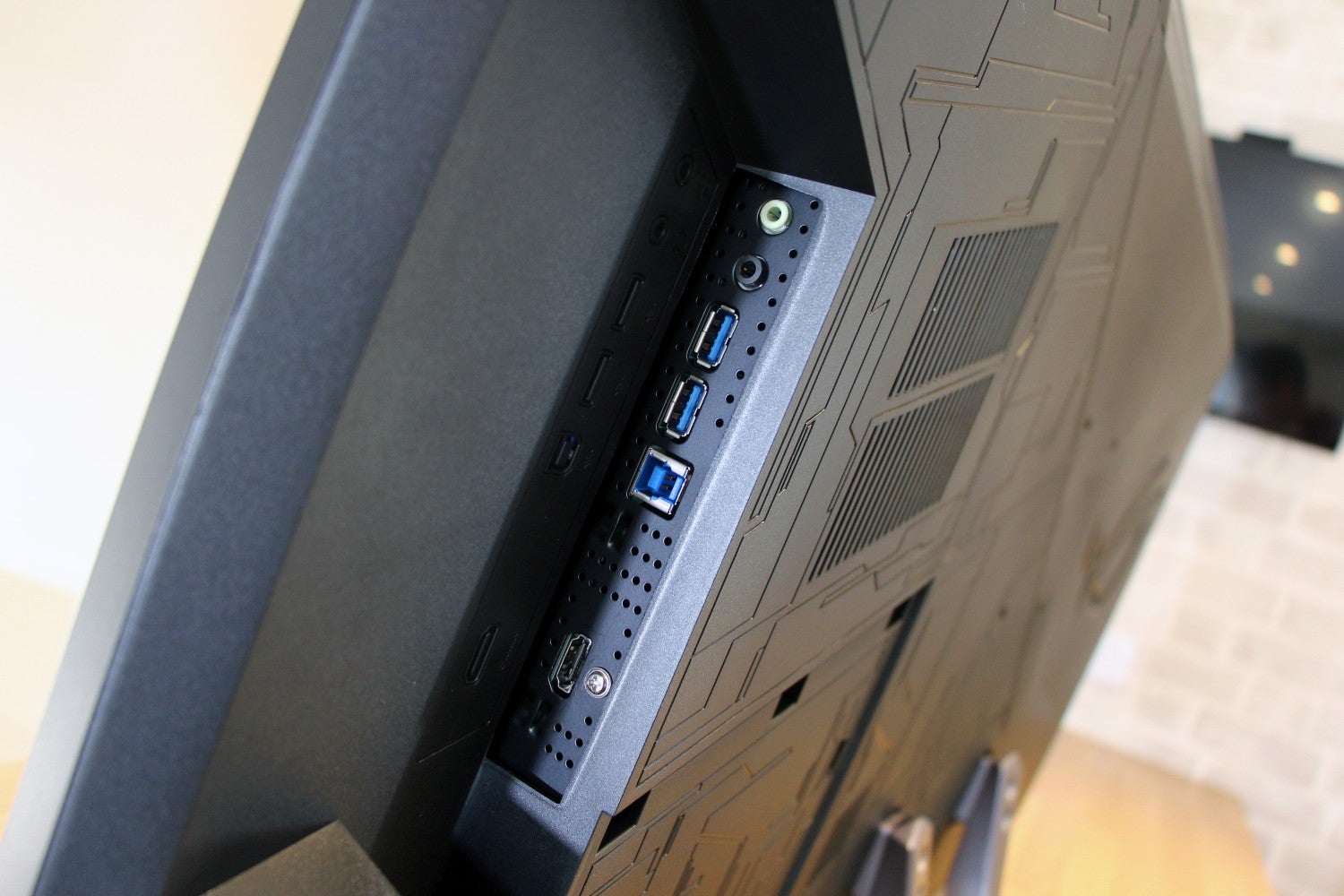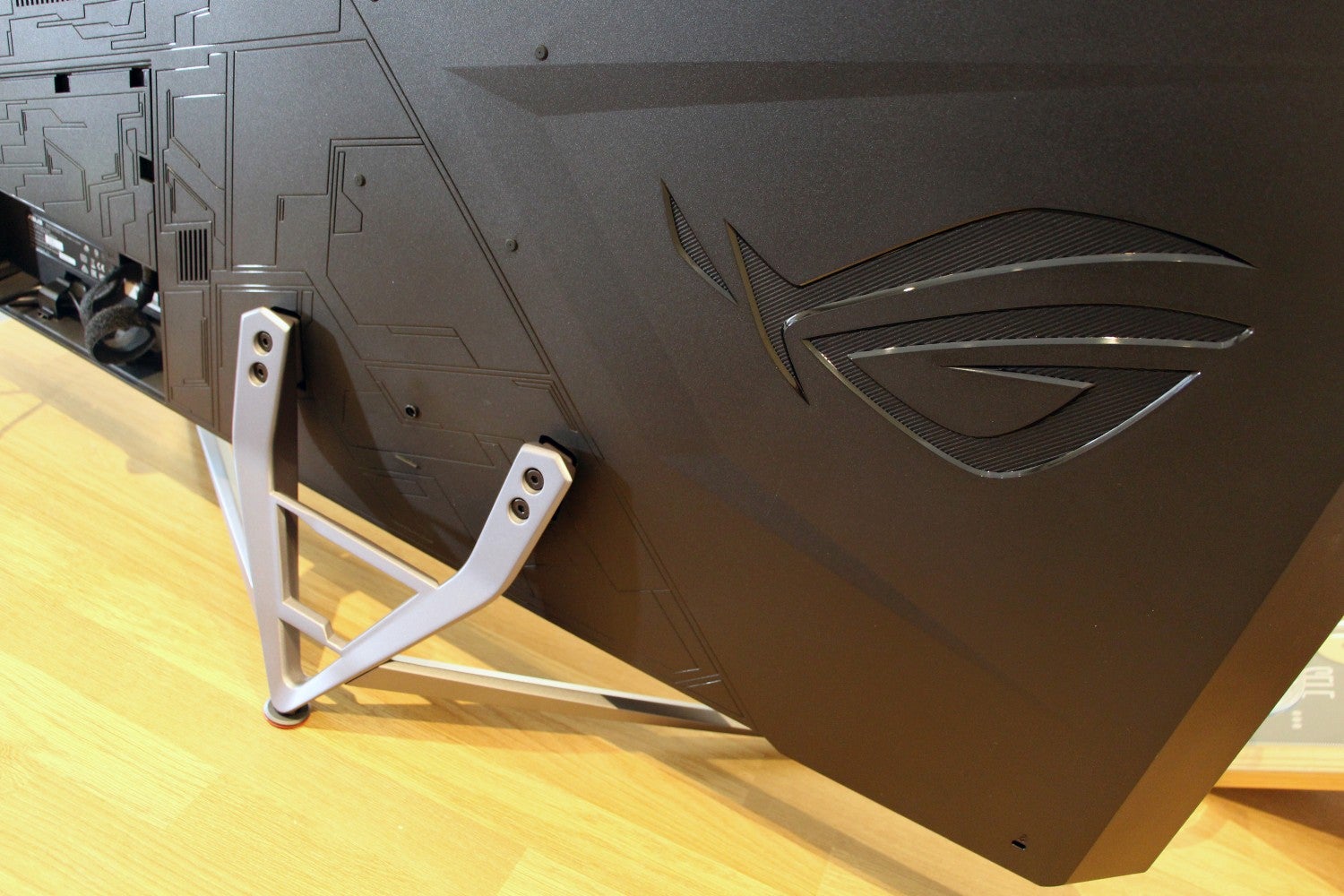Asus ROG Strix XG438Q Review
The Asus ROG Strix XG438Q is impressively huge, and it's packed with features – but is this 43in panel suitable for your gaming den?
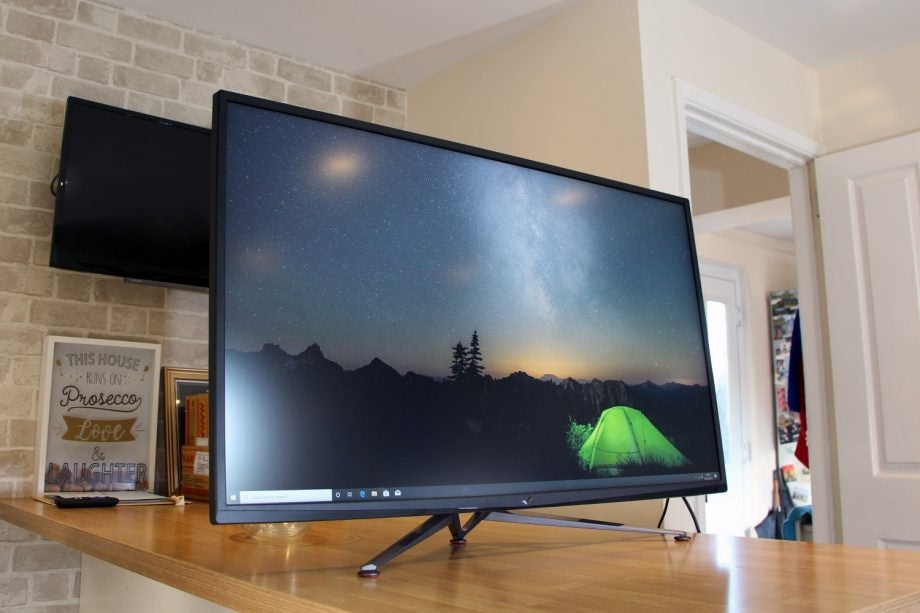

Verdict
It’s huge, includes plenty of great quality features – but the high price and unique form factor mean it won’t be suitable in every instance.
Pros
- Huge, immersive 43in 4K screen
- Great core image quality
- Punchy, powerful speakers
- Good set of features
Cons
- Looks a little dated
- Size could not suit some situations
- Not big enough for some living rooms
- Middling HDR options
Key Specifications
- Review Price: £1112
- 3840 x 2160 resolution
- 43in diagonal
- VA panel
- 120Hz AMD FreeSync 2
- 1 x DisplayPort, 3 x HDMI
- 2 x USB 3.0
- 4ms response time
- 2 x 10W speakers
- VESA DisplayHDR 600
What is it?
The Asus ROG Strix XG438Q is more expensive than almost any other gaming monitor on the market – and with good reason.
This screen combines a vast 43in diagonal with HDR, AMD FreeSync 2 and a 4K resolution, and it’s designed to sate both PC and console players – no surprise when it’s the size of a TV.
But is it worth the £1112 ($1099) price?
Design and build
The Asus’s most prominent feature, figuratively and literally, is its 43in diagonal. Alongside the familiar aspect ratio of 16:9, this screen look almost overwhelming: it’s 631mm tall and 975mm wide.
What does that mean for gaming, though? Well, as ever, there are pros and cons.
If you’re a PC gamer, then using a keyboard and mouse and sitting right in front of a 43in screen may not be ideal. The Asus’s sheer size means the panel is almost overwhelming, depending on how close you are to the screen – and in some situations you’re going to have to strain your neck to see to the corners.
If you sit further back at your PC, with a pad or with a keyboard and mouse, then the 43in size makes more sense. The screen is imposing, sure, but you can still take it all in.
Console gamers will be able to position the Asus in the living room or bedroom, just like they would a regular TV – and they can take advantage of its 120Hz refresh rate, which is rare among normal televisions.
That’s great, but there are caveats here too. The 43in diagonal is a little small compared to the majority of TVs, so if you’re sat further away then it might be difficult to make out HUD elements and page furniture.
Ultimately, it comes down to where you’re going to position this panel.
At the moment, the 43in Asus is a rare product. The vast majority of gaming monitors over 32in in size are widescreen, curved panels that will only be suitable for some gaming scenarios. Those panels tend to have sizes that range between 34in and 49in, and prices vary wildly – from £400 or $500 to more than £2000 or $2000.
There are a handful of larger 16:9 screens around, but they’re far more expensive than the Asus.
Features
The 3840 x 2160 resolution makes sense for a screen of this size, because you’re going to want more pixels to keep things looking crisp from across the room.
AMD FreeSync 2 works on both AMD and Nvidia graphics cards, and it runs at 120Hz. That refresh rate isn’t as high as the 144Hz or 240Hz rates found on smaller panels, but this isn’t a problem; it will be tricky for any graphics card to play tough single-player games at 4K and at the 144fps or beyond, and titles will still look butter-smooth at 120fps. The XG438Q isn’t designed for high-end, competitive eSports either – so a higher rate isn’t needed for those games.
VESA DisplayHDR 600 is a mid-range HDR standard, so you’ll only get a modest boost to HDR content. It will be better than DisplayHDR 400, which is more common, but not by much.
Underneath all of this is a VA panel with 10-bit colour. That’s good, because it means this screen can display 1.07 billion colours rather than the 16.7m rendered by 8-bit displays. The 4ms response time is fine, too: good enough for single-player gaming and casual multi-player titles.
However, this technology does come with caveats. If you want to run 4K, 120Hz and HDR at the same time, you’re restricted to 8-bit colour. There just isn’t enough bandwidth for 10-bit, too. This isn’t a big deal, though, because the difference won’t be discernible during gaming.
It’s also worth mentioning that the Asus uses a TV panel rather than a PC display, so it has an underlying BGR pixel layout rather than the more common RGB layout.
This means that small text on the Asus isn’t quite as sharp. Imagine how text sometimes doesn’t look crisp when you’re close to a TV.
The lack of crispness is only noticeable on close inspection, and it isn’t an issue during games. Scaling up text and icons in Windows 10 to even 150% makes text crisper and cleaner, and you’ll need to do that for a 4K panel anyway. And, if you’re really determined to improve things, there are guides online with deep dives into image settings.
The feature set is impressive, especially considering the rest of the market. If you want a huge panel with a better response time or a faster refresh rate then you’ll have to pay a few hundred pounds or dollars more – and at that point you start to suffer diminishing returns, because few people will notice a jump to a 1ms response time or a 200Hz refresh rate.
Setup
The XG438Q looks more like a TV than a PC monitor, albeit a TV from a few years ago.
The bezels around the screen are thicker than those routinely found on both gaming monitors and TVs these days, and the screen is 70mm deep, so it’s thicker than most TVs and gaming panels.
Add in the base and the Asus is 242mm deep. Combine that with its 975mm width, daunting height and 15.3kg weight and you’ve got a significant bit of kit, so it’s worth getting the tape measure out before purchasing.
Its sheer size also means adjustment options are limited. The Asus tilts back and forward and supports 100mm VESA mounts, but that’s it – no swivelling and no height adjustment.
The design does look outdated, but the Asus is better when it comes to some practical areas.
There are two USB 3.0 ports, two audio jacks and an HDMI port on the side of the screen, which makes them easy to access. Two additional HDMI ports and a DisplayPort connection face downwards, which is trickier, but there’s a neat cover to obscure cables.
Since the XG438Q takes design cues from TVs, it also means that this panel has beefy speakers. The two 10W units are good, offering plenty of volume, clear treble and a punchy high-end that avoids being tinny. They don’t have enough bass, but they’re easily good enough for gaming.
Asus’s usual on-screen display is fast, easy to navigate and well organised. It has the usual options for adjusting colour, brightness, gamma and contrast, and it has picture-by-picture and picture-in-picture options that support up to three inputs. Gamers can also add reticules, FPS counters and timers to the screen.
A joystick and four large buttons sit on the rear of the monitor, but that isn’t the most practical navigation option. Handily, Asus includes a neat remote control with the XG438Q, and a Windows app is available. It’s also possible to make the OSD larger, so you can see the menu from across a room.
Image quality
By default, the screen uses its Racing mode, and with this option selected the Asus pumps out a peak brightness level of 412 nits. That’s significant – higher than most gaming monitors, and enough to deliver ample punch from across the room.
The black point of 0.11 nits is fantastic, too – and, again, better than most gaming panels. It means that darker areas in games have incredible depth.
Those figures create a contrast ratio of 3745:1. And yet again, this is better than almost anything else out there. It means that you get plenty of vibrancy and lots of depth from this screen. As such, games will look vivid and impressive.
Those great results are joined by great colour figures. The Delta E of 1.96 is top-notch and the colour temperature of 6208K is solid – a little warm, but close enough to the 6500K ideal to not prove problematic. Those results mean you’re going to get consistently accurate colours.
The Asus can handle 99.9% of the sRGB colour gamut and 91% of the DCI-P3 gamut. The former result is excellent – it means that this screen will render any shade that games need. The latter figure is decent and is used for HDR, but a slightly better result would have delivered an even wider colour gamut.
In some other areas the Asus is less impressive. Image modes, for instance: we’d leave the Asus in its default Racing option, because the RTS, RPG and FPS modes drastically reduce contrast, and the MOBA mode is too oversaturated. The sRGB mode doesn’t improve on the panel’s default settings.
Uniformity levels aren’t great, either. The Asus lost nearly 20% of its backlight strength along both sides. These figures aren’t disastrous – if you’re in the middle of a gaming session then you won’t notice discrepancies, and they’ll become less obvious once the brightness is reduced. It’s also hardly a surprise on a screen at this size – widescreen panels suffer similarly.
The XG438Q’s HDR performance is also a little disappointing. Positively, using this screen’s HDR modes ramps up the brightness to 650 nits, which surpasses VESA DisplayHDR 600’s requirements. However, in HDR modes the panel’s black level sat at 0.32 nits.
Those results meant that the Asus produced a contrast level of 2030:1 in HDR mode.
Ordinarily those results are decent, but in HDR mode they aren’t good enough – the contrast level actually falls below what this screen achieves in normal use.
The increase in brightness means that HDR content viewed on this panel has impressive punch at the top-end, but the weaker black and contrast levels mean HDR images lack depth in darker areas and in the mid-range. You get a slight improvement, but HDR here looks a little insipid; it’s no match for a proper HDR TV.
Should I buy it?
The Asus ROG Strix XG438Q is an eye-catching screen that offers plenty to recommend it, although there are caveats for gamers.
Its sheer size works well in bedrooms and living rooms, which bodes well for console players – and it will suit some PC players too. Core image quality is decent, and the Asus serves up great speakers, good connectivity and solid build quality.
The addition of 120Hz FreeSync 2 and a 4K resolution deliver smooth, crisp gaming now while adding a greater degree of future-proofing than the majority of itsrivals. Most 16:9 gaming monitors at this size top out at 60Hz, for instance, unless you opt for an expensive widescreen or spend hundreds more.
However, the Asus looks a little dated, uniformity could be better, and the panel isn’t great for HDR. Text isn’t particularly crisp as a result of that BGR design, and the price remains high, even if the Asus is good value when compared to similar screens.
Note that this screen’s size won’t work for everyone, either. It won’t be big enough for some living rooms, but it will be too big for some PC setups. Widescreens will also be better for some genres.
But if your gaming setup will suit a huge 16:9 screen, the Asus ROG Strix XG438Q serves up excellent core image quality – and there’s nothing else at this price that offers such a broad range of features. Despite its foibles, it’s worth the investment.

